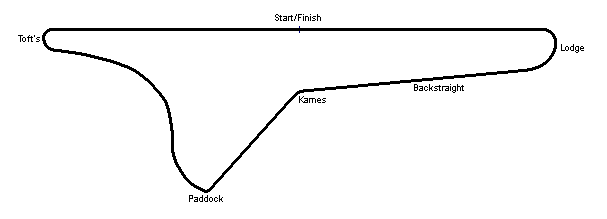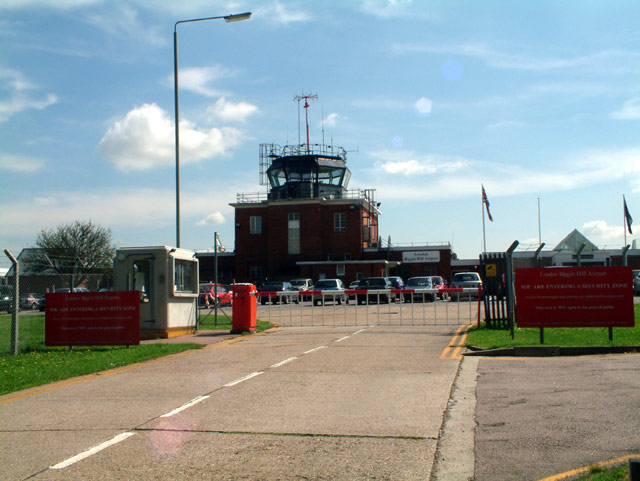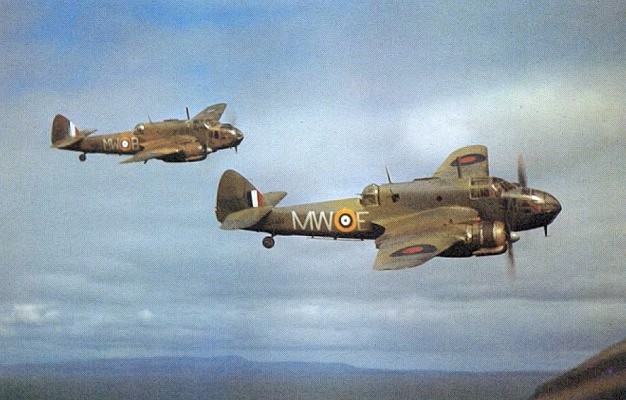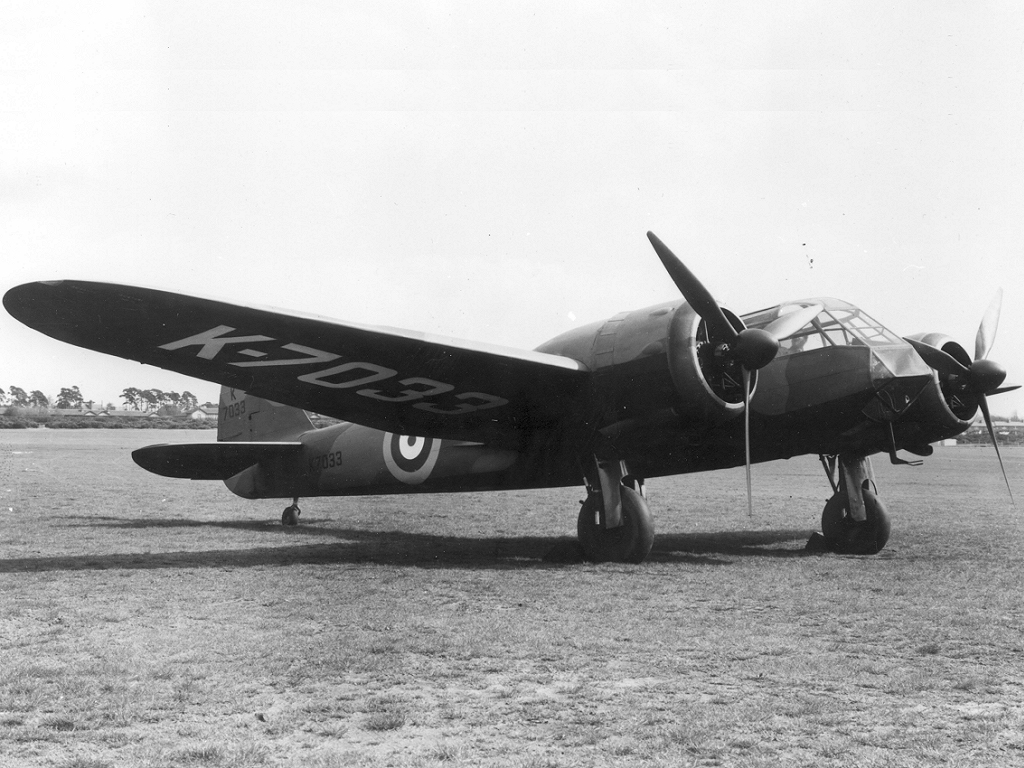|
Charterhall
Royal Air Force Charterhall or more simply RAF Charterhall is a former Royal Air Force satellite station located in the Scottish Borders and the historic county of Berwickshire between the village of Greenlaw and Duns. It was originally a First World War landing ground named Eccles Toft. The airfield was reconstructed in 1942 and was used mainly by No. 54 Operational Training Unit during Second World War. The RAF left in 1947 and the airfield was officially closed. The location was then left for agricultural use before becoming a motor racing track in 1952. Various forms of motorsport took place at Charterhall, including Formula Two, Formula Libre and Formula Junior with drivers such as Jim Clark, Sir Jackie Stewart and Sir Stirling Moss all having competed there until motor racing ceased at the airfield in 1964. However, in the recent years, the Border Ecosse Car Club have organised the "Charterhall Stages Rally" at the airfield which also ceased in 2013. The airfield is ... [...More Info...] [...Related Items...] OR: [Wikipedia] [Google] [Baidu] |
Stirling Moss
Sir Stirling Craufurd Moss (17 September 1929 – 12 April 2020) was a British racing driver and sports broadcasting, broadcaster, who competed in Formula One from to . Widely regarded as one of the greatest drivers to never win the Formula One World Drivers' Championship, Moss won a record 212 official races across several motorsport disciplines, including 16 Formula One Grands Prix. In endurance racing (motorsport), endurance racing, Moss won the 12 Hours of Sebring in 1954 12 Hours of Sebring, 1954, as well as the Mille Miglia in 1955 Mille Miglia, 1955 with Mercedes-Benz in motorsport, Mercedes. Born and raised in London, Moss was the son of amateur racing driver Alfred Moss and the older brother of rallying, rally driver Pat Moss, Pat. Aged nine, Alfred bought him an Austin 7, which he raced around the field of the family's country house. Initially an equestrianism, equestrian, Moss used his winnings from horse riding competitions to purchase a Cooper 500 in 1948. He was i ... [...More Info...] [...Related Items...] OR: [Wikipedia] [Google] [Baidu] |
Greenlaw
Greenlaw is a town and civil parish situated in the foothills of the Lammermuir Hills on Blackadder Water at the junction of the A697 and the A6105 in the Scottish Borders area of Scotland. At the 2001 census, the parish had a population of 661. History Greenlaw was first made the county town of Berwickshire in 1596. At that time, Greenlaw was situated about south of the present village, atop a hill - the 'Green Law'. This area is now known as Old Greenlaw. In 1661, county town status was lost to Duns by an act of Parliament, the Duns Act 1661 (c. 136). When Patrick, Earl of Marchmont attained the barony of Greenlaw in the 1670s, he made it his business to restore what he saw as the rights and privileges that came with the barony. In 1696 he succeeded: an act of Parliament, the (c. 16), was passed, laying down in statute that the town of Greenlaw should be the Head Burgh of Berwickshire. However, attempts were made in 1739, 1790 and 1810 to take the rights and privi ... [...More Info...] [...Related Items...] OR: [Wikipedia] [Google] [Baidu] |
List Of Former Royal Air Force Stations
This list of former RAF stations includes most of the stations, airfields and administrative headquarters previously used by the Royal Air Force. They are listed under any former county or country name which was appropriate for the duration of operation. During 1991, the RAF had several Military Emergency Diversion Aerodrome (MEDA) airfields: RAF Kinloss, Leeming, Valley, Waddington, Wattisham & Lyneham ended their role from 1 March 1991, leaving Brize Norton, Manston, Leuchars and St Mawgan with the role. __TOC__ British Isles Chain Home, Chain Home Low, Chain Home Extra Low, ROTOR and tropo-scatter stations Notes: Some of the Chain Home Low sites were co-located with the larger Chain Home radars. Chain Home Extra Low equipment was co-located with "Chain Home" and "Chain Home Low" as well as at separate sites, but were of a less permanent nature, usually with mobile equipment. ROTOR was the post war Radar interception system created from existing radar installatio ... [...More Info...] [...Related Items...] OR: [Wikipedia] [Google] [Baidu] |
Jim Clark
James Clark (4 March 1936 – 7 April 1968) was a British racing driver from Scotland, who competed in Formula One from to . Clark won two Formula One World Drivers' Championship titles with Lotus, and—at the time of his death—held the records for most wins (25), pole positions (33), and fastest laps (28), among others. In American open-wheel racing, Clark won the Indianapolis 500 in 1965 with Lotus, becoming the first non-American winner of the race in 49 years. Born in Fife and raised in the Scottish Borders, Clark started his racing career in road rallying and hillclimbing. By 1958, Clark had graduated to sports car racing in national competition with Border Reivers, racing the Jaguar D-Type and Porsche 356, where he attracted the attention of Lotus founder Colin Chapman. Driving a Lotus Elite, Clark finished second-in-class at the 24 Hours of Le Mans in 1959. Clark made his formula racing debut the following year in Formula Junior, winning the championsh ... [...More Info...] [...Related Items...] OR: [Wikipedia] [Google] [Baidu] |
De Havilland Mosquito
The de Havilland DH.98 Mosquito is a British twin-engined, multirole combat aircraft, introduced during the World War II, Second World War. Unusual in that its airframe was constructed mostly of wood, it was nicknamed the "Wooden Wonder", or "Mossie". In 1941, it was one of the fastest operational aircraft in the world.. Originally conceived as an unarmed fast bomber, the Mosquito's use evolved during the war into many roles, including low- to medium-altitude daytime tactical bomber, high-altitude night bomber, Pathfinder (RAF), pathfinder, Day fighter, day or night fighter, fighter-bomber, intruder (air combat), intruder, maritime strike aircraft, maritime strike, and photo-reconnaissance aircraft. It was also used by the British Overseas Airways Corporation as a fast transport to carry small, high-value cargo to and from Neutrality (international relations), neutral countries through German-occupied Europe, enemy-controlled airspace. The crew of two, pilot and navigator, sat ... [...More Info...] [...Related Items...] OR: [Wikipedia] [Google] [Baidu] |
Aircraft Interception Radar
Aircraft interception radar, or AI radar for short, is a historical British term for radar systems used to equip aircraft with the means to find and track other flying aircraft. These radars are used primarily by Royal Air Force (RAF) and Fleet Air Arm night fighters and interceptors for locating and tracking other aircraft, although most AI radars could also be used in a number of secondary roles as well. The term was sometimes used generically for similar radars used in other countries, notably the US. AI radar stands in contrast with ASV radar, whose goal is to detect ships and other sea-surface vessels, rather than aircraft; both AI and ASV are often designed for airborne use. The term was first used circa 1936, when a group at the Bawdsey Manor research center began considering how to fit a radar system into an aircraft. This work led to the AI Mk. IV radar, the first production air-to-air radar system. Mk. IV entered service in July 1940 and reached widespread availabili ... [...More Info...] [...Related Items...] OR: [Wikipedia] [Google] [Baidu] |
Bristol Beaufighter
The Bristol Type 156 Beaufighter (often called the Beau) is a British multi-role aircraft developed during the Second World War by the Bristol Aeroplane Company. It was originally conceived as a heavy fighter variant of the Bristol Beaufort torpedo bomber. The Beaufighter proved to be an effective night fighter, which came into service with the Royal Air Force (RAF) during the Battle of Britain, its large size allowing it to carry heavy armament and early aircraft interception radar without major performance penalties. The Beaufighter was used in many roles; receiving the nicknames ''Rockbeau'' for its use as a rocket-armed ground attack aircraft and ''Torbeau'' as a torpedo bomber against Axis shipping, in which it replaced the Beaufort. In later operations, it served mainly as a maritime strike/ground attack aircraft, RAF Coastal Command having operated the largest number of Beaufighters amongst all other commands at one point. The Royal Australian Air Force (RAAF) al ... [...More Info...] [...Related Items...] OR: [Wikipedia] [Google] [Baidu] |
Light Bomber
A light bomber is a relatively small and fast type of military bomber aircraft that was primarily employed before the 1950s. Such aircraft would typically not carry more than one ton of ordnance. The earliest light bombers were intended to drop their bombs in level flight over a target. During World War I some air forces began to distinguish between light bombers and the earliest purpose-built attack aircraft which carried out ground attack, close air support, anti-shipping and similar missions. After World War I, attack aircraft were typically identifiable by their ability to carry multiple fixed machine guns, automatic cannons and rockets in addition to bombs. Light bombers have often served as attack aircraft and vice versa. Purpose-built light bombers disappeared from military aviation by the end of World War II, as advancements in propulsion and aeronautical design enabled newer attack/strike aircraft, fighter-bombers, and multirole aircraft types to deliver equal ... [...More Info...] [...Related Items...] OR: [Wikipedia] [Google] [Baidu] |
Bristol Blenheim
The Bristol Blenheim is a British light bomber designed and built by the Bristol Aeroplane Company, which was used extensively in the first two years of the Second World War, with examples still being used as trainers until the end of the war. Development began with the ''Type 142'', a civil airliner, after a challenge from the newspaper proprietor Harold Harmsworth, 1st Viscount Rothermere, Lord Rothermere to produce the fastest commercial aircraft in Europe. The ''Type 142'' first flew in April 1935, and the Air Ministry, ordered a modified design as the ''Type 142M'' for the Royal Air Force (RAF) as a bomber. Deliveries of the new Blenheim to RAF squadrons commenced on 10 March 1937. In service the Type 142M became the Blenheim Mk.I which would be developed into the long-nosed Type 149, the Blenheim Mk.IV, except in Canada where Fairchild Canada built the Type 149 under licence as the Bolingbroke. The Type 160 Bisley was also developed from the Blenheim but was already obsol ... [...More Info...] [...Related Items...] OR: [Wikipedia] [Google] [Baidu] |
Avro 504
The Avro 504 is a single-engine biplane bomber made by the Avro, Avro aircraft company and under licence by others. Production during World War I totalled 8,970 and continued for almost 20 years, making it the most-produced aircraft of any kind that served in any military capacity during the First World War. More than 10,000 were built from 1913 until production ended in 1932. Design and development First flown from Brooklands by F. P. Raynham, Fred "Freddie" Raynham on 18 September 1913,Jackson 1990, p.52. powered by an Gnome Lambda seven-cylinder rotary engine, the Avro 504 was a development of the earlier Avro 500, designed for training and private flying. It was a interplane struts#Bays, two-bay all-wooden biplane with a square-section fuselage. Manufacturers The following companies are recorded as manufacturing the Avro 504 under licence. * Avro, A. V. Roe and Co Ltd., Park Works, Newton Heath, Manchester; and at Hamble Aerodrome, near Southampton, Hants * Australian A ... [...More Info...] [...Related Items...] OR: [Wikipedia] [Google] [Baidu] |
Airco DH
The Aircraft Manufacturing Company Limited (Airco) was an early British aircraft manufacturer. Established during 1912, it grew rapidly during the First World War, referring to itself as the largest aircraft company in the world by 1918. Airco produced many thousands of aircraft for both the British and Allied military air wings throughout the war, including fighters, trainers and bombers. The majority of the company's aircraft were designed in-house by Airco's chief designer Geoffrey de Havilland. Airco established the first airline in the United Kingdom, Aircraft Transport and Travel Limited, which operated as a subsidiary of Airco. On 25 August 1919, it commenced the world's first regular daily international service. Following the end of the war, the company's fortunes rapidly turned sour. The interwar period was unfavourable for aircraft manufacturers largely due to a glut of surplus aircraft from the war, while a lack of interest in aviation on the part of the Bri ... [...More Info...] [...Related Items...] OR: [Wikipedia] [Google] [Baidu] |
Reconnaissance Aircraft
A reconnaissance aircraft (colloquially, a spy plane) is a military aircraft designed or adapted to perform aerial reconnaissance with roles including collection of imagery intelligence (including using Aerial photography, photography), signals intelligence, as well as measurement and signature intelligence. Modern technology has also enabled some aircraft and Unmanned aerial vehicle, UAVs to carry out real-time surveillance in addition to general Military intelligence, intelligence gathering. Before the development of devices such as radar, military forces relied on reconnaissance aircraft for visual Artillery observer, observation and Reconnaissance, scouting of enemy movement. An example is the Consolidated PBY Catalina, PBY Catalina Maritime patrol aircraft, maritime patrol flying boat used by the Allies of World War II, Allies in World War II: a Formation flying, flight of United States Navy, U.S. Navy Catalinas spotted part of the Japanese fleet approaching Midway Island ... [...More Info...] [...Related Items...] OR: [Wikipedia] [Google] [Baidu] |











